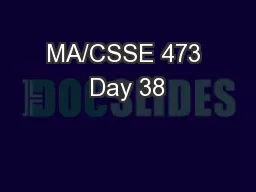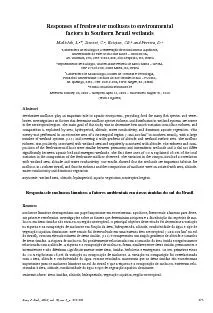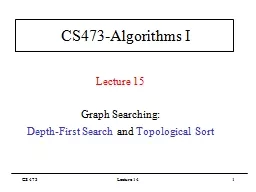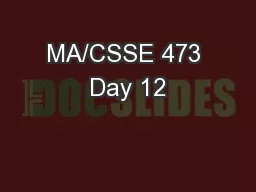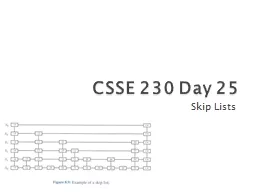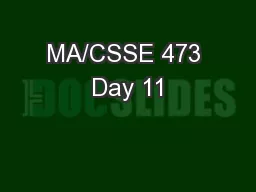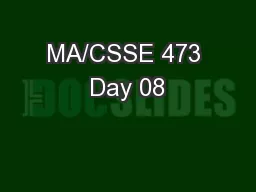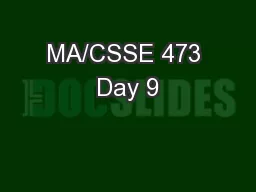PPT-MA/CSSE 473 Day 38
Author : myesha-ticknor | Published Date : 2017-10-29
Problems Decision Problems P and NP Intro to computational Complexity Polynomialtime algorithms The Law of the Algorithm Jungle Polynomial good exponential bad
Presentation Embed Code
Download Presentation
Download Presentation The PPT/PDF document "MA/CSSE 473 Day 38" is the property of its rightful owner. Permission is granted to download and print the materials on this website for personal, non-commercial use only, and to display it on your personal computer provided you do not modify the materials and that you retain all copyright notices contained in the materials. By downloading content from our website, you accept the terms of this agreement.
MA/CSSE 473 Day 38: Transcript
Download Rules Of Document
"MA/CSSE 473 Day 38"The content belongs to its owner. You may download and print it for personal use, without modification, and keep all copyright notices. By downloading, you agree to these terms.
Related Documents

